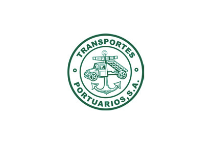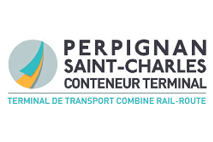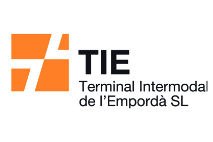Strategy and promotion
The networked port
The Port has set up a network of services and infrastructure at strategic points, which have taken the form of inland goods terminals to bring port services closer to maritime logistics operators and import-export customers in the areas that it serves. These local infrastructures help to build more efficient supply chains and make it easier to route goods through the Catalan capital.
Permanent representatives
To serve its strategic markets, the Port
also has an active presence through
permanent representations:
In the hinterland markets (European and Mediterranean) it has permanent delegations in Spain (Zaragoza, Madrid and the north) and in France (Lyon and Toulouse). Their function is to bring the services of the Port of Barcelona closer to international maritime trade operators located in the inland markets and to help create new logistics chains.
In the foreland markets, the Port has permanent representation in South America, Japan and China, to strengthen ties and increase exchanges with these key markets and their neighbouring countries.
Inland maritime terminals






Terminal marítima de Zaragoza
Purpose and scope
A service platform for operators, importers and
exporters of Aragon, Navarre and La Rioja, and an
intermediate logistics node towards the Centre and
North-east of the Peninsula.
Traffic in 2017
155,000 TEU, the first
port-railway terminal
and the second inland
intermodal terminal in
Spain.
Rail services
Between 5 and 7 daily services
with the Port and daily
connections with other Spanish
logistics nodes.
The Port also has traffic to other terminals in the area: PLAZA and LTA.
Ports Secs de Coslada (Madrid), Azuqueca de Henares and Yunquera de Henares (Guadalajara)
Purpose and scope
The Port holds a stake in these infrastructures, which
aim to bring maritime transport closer and foster the
competitiveness of the logistics and consumption
hub of the Community of Madrid and the centre
of the Peninsula, as well as connecting with other
markets in the Iberian Peninsula.
Traffic in 2017
61,000 TEU at
Azuqueca, with the ports
of Barcelona Valencia,
Algeciras, Seville and
Bilbao.
Rail services
One daily service between
the Port of Barcelona and the
terminal of the Puerto Seco
Azuqueca de Henares.
To extend the activity of the Henares corridor, the Port of Barcelona is working with local partners to promote the development of the Terminal Intermodal Marítima Centro, in the municipality of Yunquera de Henares.
Terminal intermodal de Navarra
Purpose and scope
Rail terminal located in the town of Noáin, near
Pamplona.
Traffic in 2017
15,000 TEU
Rail services
Three weekly services with the
Port, operated by Hutchison
Logistics.
Terminal Tarragona Entrevies
Purpose and scope
A rail terminal attached to the Tarragona
Classification Terminal and operated by Transportes
Portuarios.
Traffic in 2017
22,000 TEU with the
Port of Barcelona.
Rail services
Six weekly services with the
Port, operated by Transportes
Portuarios and two weekly
services with Cordoba, Seville
and San Roque operated by
Multirail.
Terminal de contenidors de Saint Charles (Perpinyà)
Purpose and scope
The Port holds 5% of the capital of the Saint Charles
container terminal (Perpignan), located in one of
southern Europe’s main logistics and distribution
centres for fresh produce. It hosts logistics
operations of all types of goods starting/ending in
Europe and passing through the Mediterranean.
Traffic in 2017
27,000 ITU
Rail services
Regular connections to the
Northwest and Southeast of
France.
Terminal intermodal de l'Empordà SL
The Port and the Public Company Cimalsa have formed a company to develop the intermodal logistics hub comprising the future Far de l’Empordà intermodal terminal and the current Vilamalla terminal. Both are located next to the Logis Empordà storage and distribution centre to the east of Figueres. The terminal was recently leased to a national haulier.
